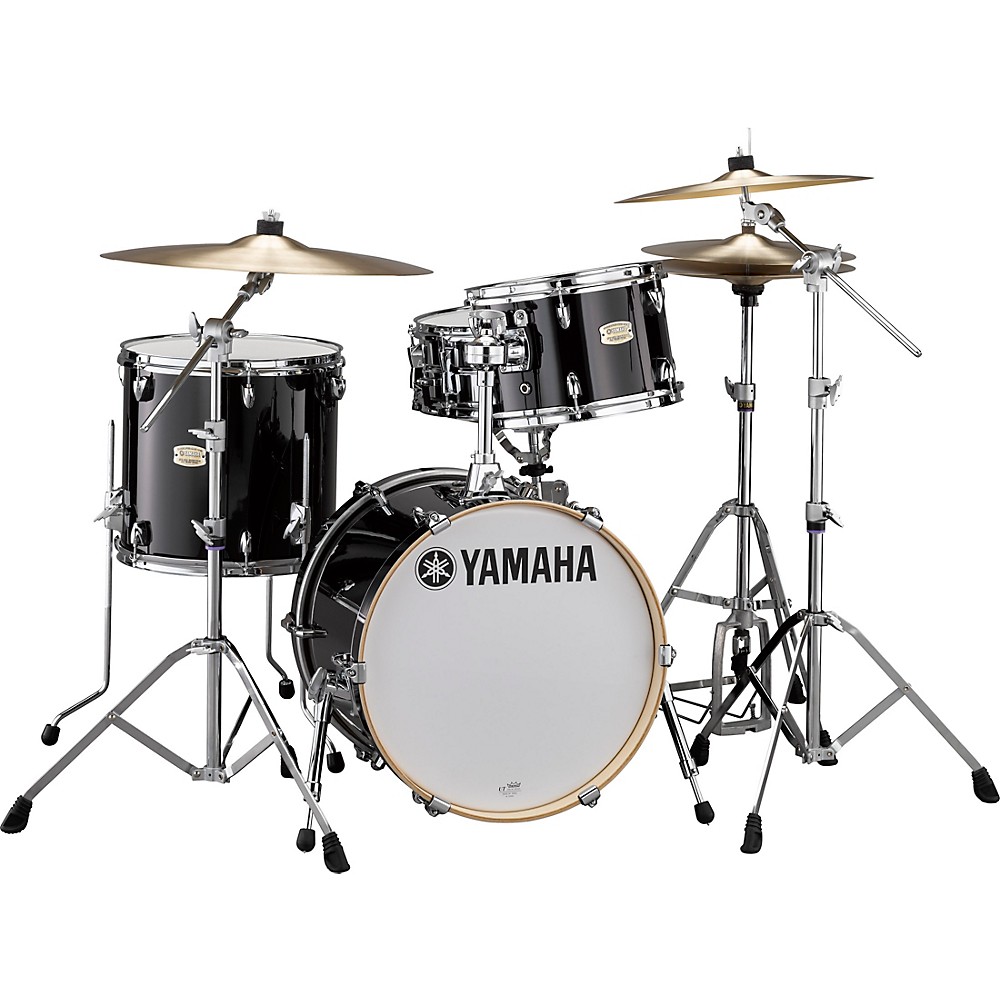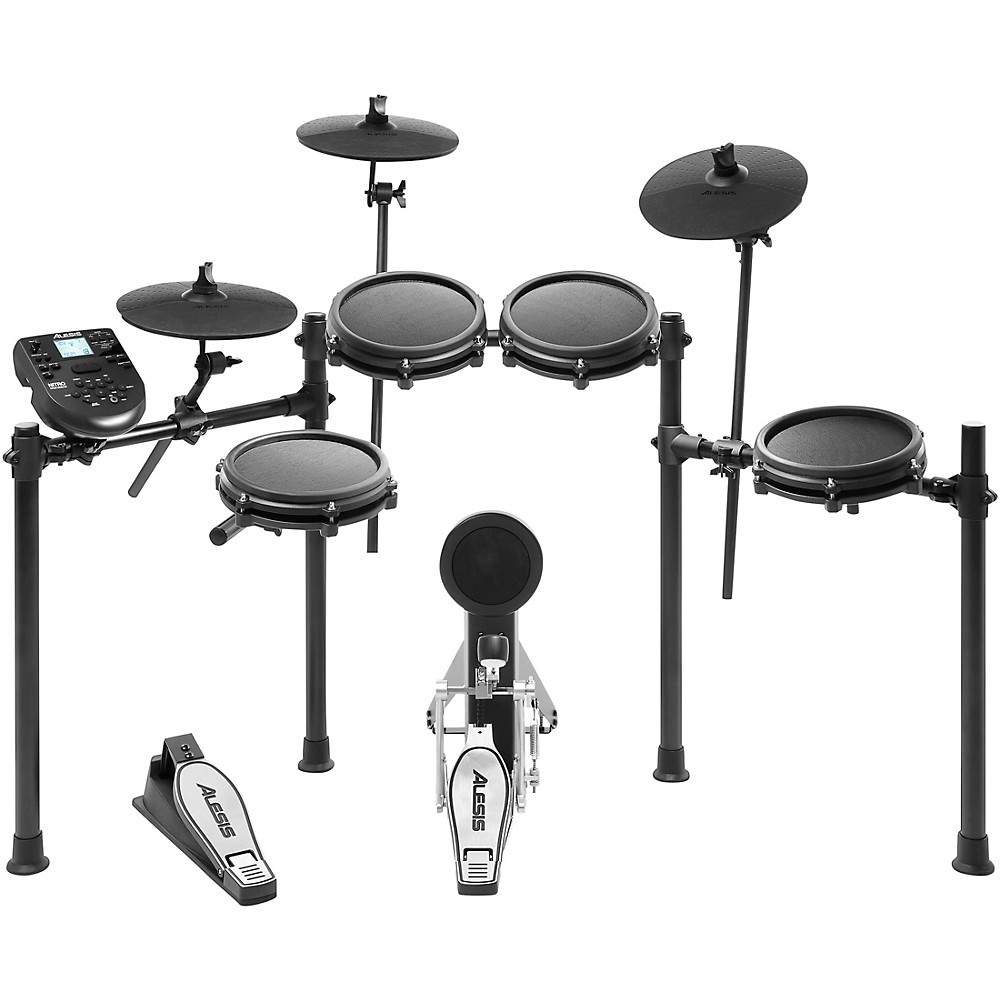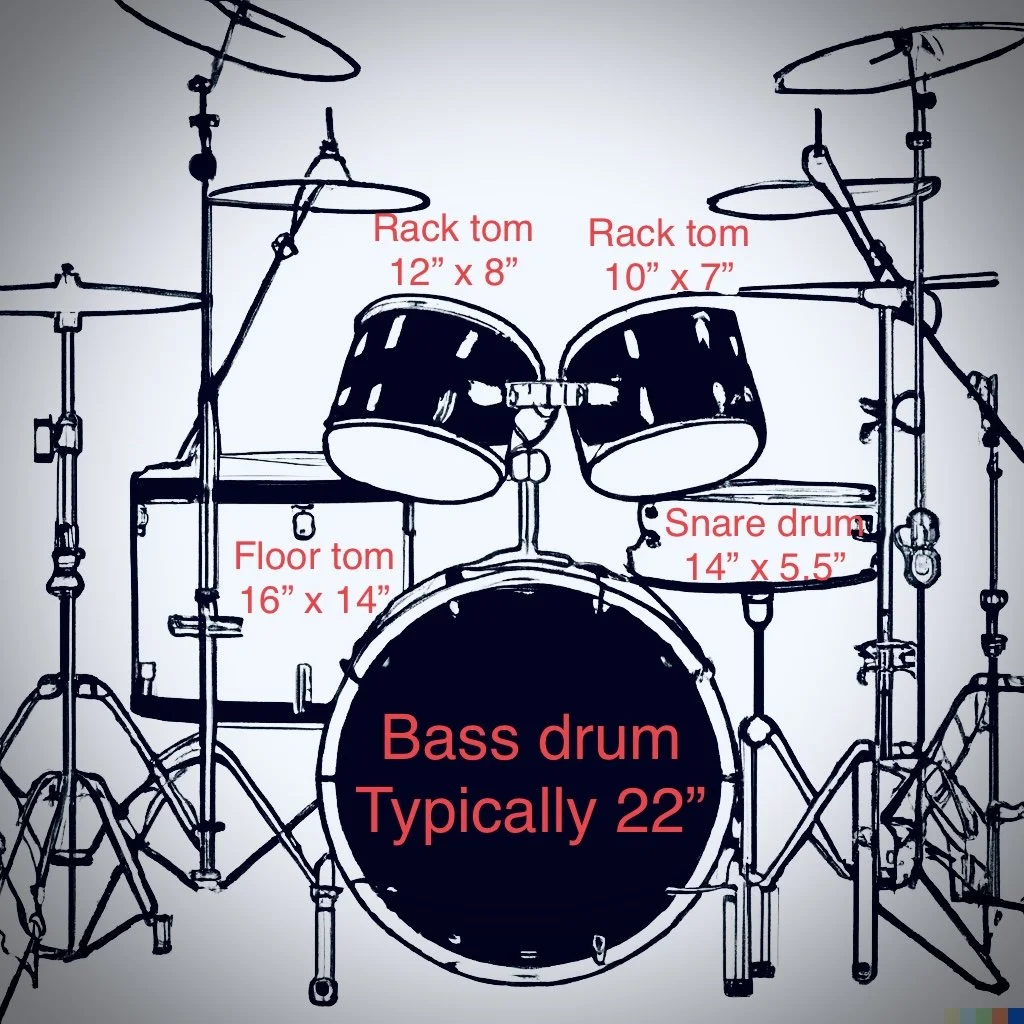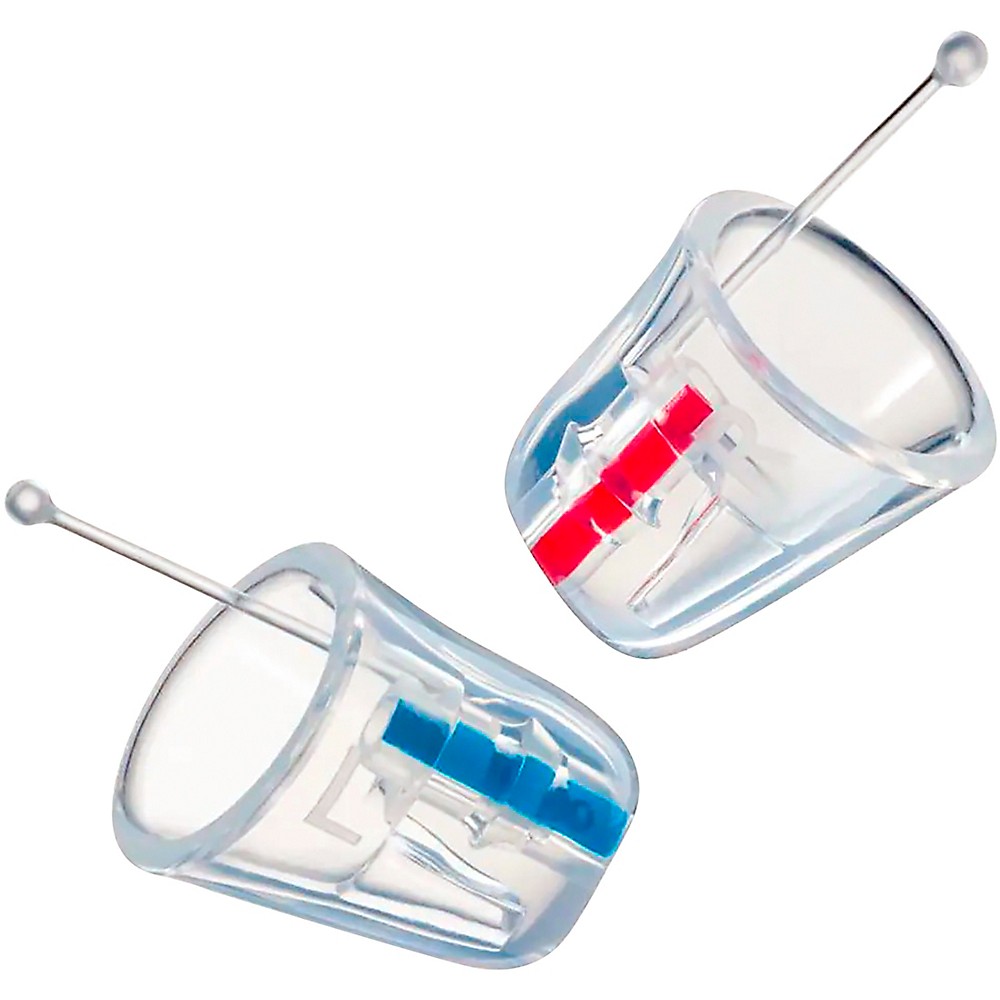Beginner’s Drum Kit Buying Guide: 10 Features to Consider
How should you analyse the features of a drum kit to make the right choice?
This article contains affiliate links to products we love and recommend.
In This Article
If you’re a beginner or haven’t bought many drum kits before the range of choice in the drum set market can be overwhelming.
Drum kit store pages list countless features that may as well be written in Latin if you’re not familiar with the lingo.
In this guide we share our view on the most important factors to consider, and what some of the jargon means, when choosing a drum kit as a beginner.
How much should you pay for a drum kit?
Price is an obvious consideration when buying a drum kit as a beginner.
Of course you get what you pay for, but if you’re just starting out or buying a kit for someone who is early in their drumming journey you don’t need many of the features that ultimately you pay more money for.
You can get very cheap beginner kits but they won’t sound great and won’t be suitable for gigging.
Therefore these cheap kits are useful for absolute beginners but don’t have much longevity.
You can spend a little more money for a kit that will be perfectly suitable for gigging and playing for a long time.
In 2023 entry level drum kits are available for $300 to $600 (USD; prices vary slightly depending on which country you live in).
My first kit was a Yamaha Stage Custom which lasted me around 10 years until I decided to upgrade, and it’s perfectly good enough to gig with, giving it good longevity for beginners to intermediate players.
As for electric drum kits an entry-level Alesis Nitro Mesh is around $350, and cheaper options are available.
Another good beginner acoustic drum kit option would be a Gretsch Energy for around $550.
Should you buy an electric or acoustic drum kit?
Increasingly an important choice is whether you should go for an electric or acoustic set.
Here are the advantages and disadvantages of an electric drum kit compared to an acoustic kit:
Advantages
They’re quieter (in fact almost silent as heard from another room). This may be a deciding factor for parents of an aspiring rock drummer.
Their tone is uniform, meaning a beginner who doesn’t have complete control over the sticks yet will be able to get better sounding results quickly.
They come with a fun range of sounds to play around with.
Disadvantages
They’re less appropriate for gigging, which may be a consideration for the drum kit’s longevity.
They have a smaller range of possible sounds that the drummer can achieve simply by how they play the kit. This is a disadvantage as the drummer becomes more adept at manipulating the kit.
They don’t feel as natural, and to many drummers this is less fun and satisfying.
You may learn bad habits, or fall behind in learning how an acoustic kit feels and sounds to play.
They don’t come in the wide range of beautiful finishes that acoustic kits are available in.
A good option for an electric drum kit would be the Alesis Nitro series, which is an entry-level set at an affordable price.
Should you buy brand new or used drums?
When buying a beginner drum kit you should consider whether brand new or second-hand is the best option.
Second hand drums can be a great option if you’re looking to save money, just be sure to do the checks we suggest below.
There are many places you can buy second hand drums. Many drum dealers buy and sell second hand.
With face to face drum stores you can check over the drums and get the confidence that they have been approved by the drum store.
Online you can buy second hand drums from the Guitar Center, ebay or other used goods marketplaces.
Many people prefer the security and feel good factor of buying shiny new drums.
What to check when buying second hand drums
There are several things you should check if you’re buying a second hand drum kit:
Hardware. The hardware is often one of the first things to deteriorate. Check that the screws work properly on stands, bass drum legs and so on. Ensure they screw up tightly without slipping.
Wraps and finishes. If the drum has a wrap (the patterned vinyl sheet around the drums) check that it hasn’t come unstuck and that there are no significant cracks and breaks.
Shell damage. Check that the drum shells don’t have any significant cracks. If the drum has a wrap you can look through the clear head on the bottom to see inside the drum.
Badges. Check that original badges haven’t been lost, as this could affect the value when you want to sell on.
Drum heads. The drum heads are easily replaceable, but they have a value. If you are intending to keep the heads that the kit is sold with check that they are in good condition, otherwise you will need to replace them. In this case make sure you take this into account when valuing the kit. Check out our guide to fitting a new drum head here.
Do second-hand drums lose value?
In general a drum kit will lose value from new.
There are some exceptions like vintage and rare drums that attract high prices even when they’re old.
The good news is that the value doesn’t tend to depreciate too much from second to third hand and beyond.
Here the important factor is the condition of the drums.
Where can you buy and sell used drums?
If you buy a second hand kit and keep it in good condition you should be able to make your money back by selling on one of the many online marketplaces such as Guitar Center, ebay or many local drum dealers that buy and sell used drums.
What are the best brands for beginner drums?
Some online drum shops sell own-brand entry-level drum kits at very affordable prices.
You can however spend a little more and get a good quality kit from a reputable brand that you’ll love more and more over time.
Some of the key drum kit brands that sell beginner and intermediate kits are:
Gretsch
Ludwig
Pearl
Yamaha
Tama
Sonor
Mapex
Premier
Considering drum shell materials and construction
The material and design of the drums themselves (the shells) is important for the sound and feel of a kit.
This may not be a priority for absolute beginners, but if you want a kit with longevity that you’d be happy to gig with it’s best to opt for drums built with quality materials.
The most popular drum shell materials for beginner and intermediate drum kits are:
Maple
Poplar
Mahogany
Birch
These different woods do have different tonal characteristics.
For beginners a kit made from any of these is a good place to start.
As well as the material you should consider the number of plies (the number of sheets of wood fused to make the shell).
For beginner and intermediate kits a 6-ply drum is a good bet as it has good resonance, but with control over the tones that beginners need to work to control themselves.
Choosing drum shell sizes and configuration
A typical beginner to intermediate drum kit configuration and shell sizes
Drums come in different sizes and configurations (the way different drums are positioned).
The most typical set up for a beginner, to learn how to move around the kit, would be:
A bass drum (22 inch diameter is most common)
A snare drum (14 inches by 5.5 inches is most common)
Two rack toms (the toms that are positioned above the bass drum, commonly 10 by 7 inches, and 12 by 8 inches)
One floor tom (typically 16 by 14 inches)
Cymbals including a hi hat, crash cymbal (typically around 14 inches) and ride cymbal (typically around 20 inches)
This Yamaha Stage Custom model features typical sizes and configuration for a beginner drum kit.
You can often choose different dimensions for a given drum kit.
Generally speaking bigger drums produce deeper and louder tones than smaller drums.
For example a typical jazz kit (a style in which the bass drum is played more for texture than real punch) would have an 18 inch bass drum.
While the dimensions above are fairly typical, you might need to consider getting a smaller bass drum if the kit is for a child.
This is because they will need to be able to reach the pedals from the drum throne.
Choosing a drum wrap or finish
The wrap or finish of a drum can influence the sound subtly.
However for beginner to intermediate kits the most important consideration when choosing the finish is how the drums look.
It’s important that you love your drums so you’re inspired to play.
A wrap is a vinyl sheet that is fixed to the outside of the shell. This allows a wide range of different finishes, so have fun exploring.
Meanwhile you can also get drums which are stained, giving a more natural and simple look.
Considering drum kit hardware
Hardware is one of the most important considerations when choosing a drum kit as it is one of the first aspects of a drum kit to deteriorate.
Some of the key features to look for include:
Do the wing nuts look substantial?
How are the rack toms mounted? Do they need a separate stand, or does the bass drum have a drilled hole for a tom mount?
Some tom mounts include a ball and socket type mechanism for positioning the toms accurately. This is a good option.
Whatever the mounting system, ensure the toms do not droop onto the snare or bass drum as this will damage them and pick up unwanted sounds like the metal clicking together.
Will the throne be comfy? A well padded throne is a good investment.
Do the cymbal stands have boom arms? This can help to achieve different positions around the kit.
Do the bass drum legs look substantial?
Do the stand legs have single or double brackets?
Single brackets are cheaper but they are more prone to breaking or collapsing.
Double bracket stands are well built.
Drum heads
Drum heads are a very important feature of the drum’s sound.
Typically a beginner or intermediate kit will come with the manufacturer’s branded heads.
These are fine but it’s easy to replace drum heads to substantially improve the sound of a drum.
Check out our comprehensive guide to choosing drum heads here.
Drum accessories
There are many accessories you can buy to enhance your drumming experience.
Some of the most useful drumming accessories are:
A spare tuning key
Spare drum sticks (check out our guide to choosing drum sticks here)
A practice pad (check out our guide to the best practice pads here)
Moongel (which dampens the drum heads to reduce the uncontrolled ringing sounds)
A metronome app
There are many choices to make when choosing a drum kit.
Whether you are a beginner or an experienced drummer it can be very exciting to choose new equipment, but also daunting to make sure you spend your money in the best way.
This guide should give you some key points to consider when making a beginner purchase.
For more information head to our gear page for reviews and guides.
Happy drum hunting!








